Q&A With CSULB’s Shark Doctor
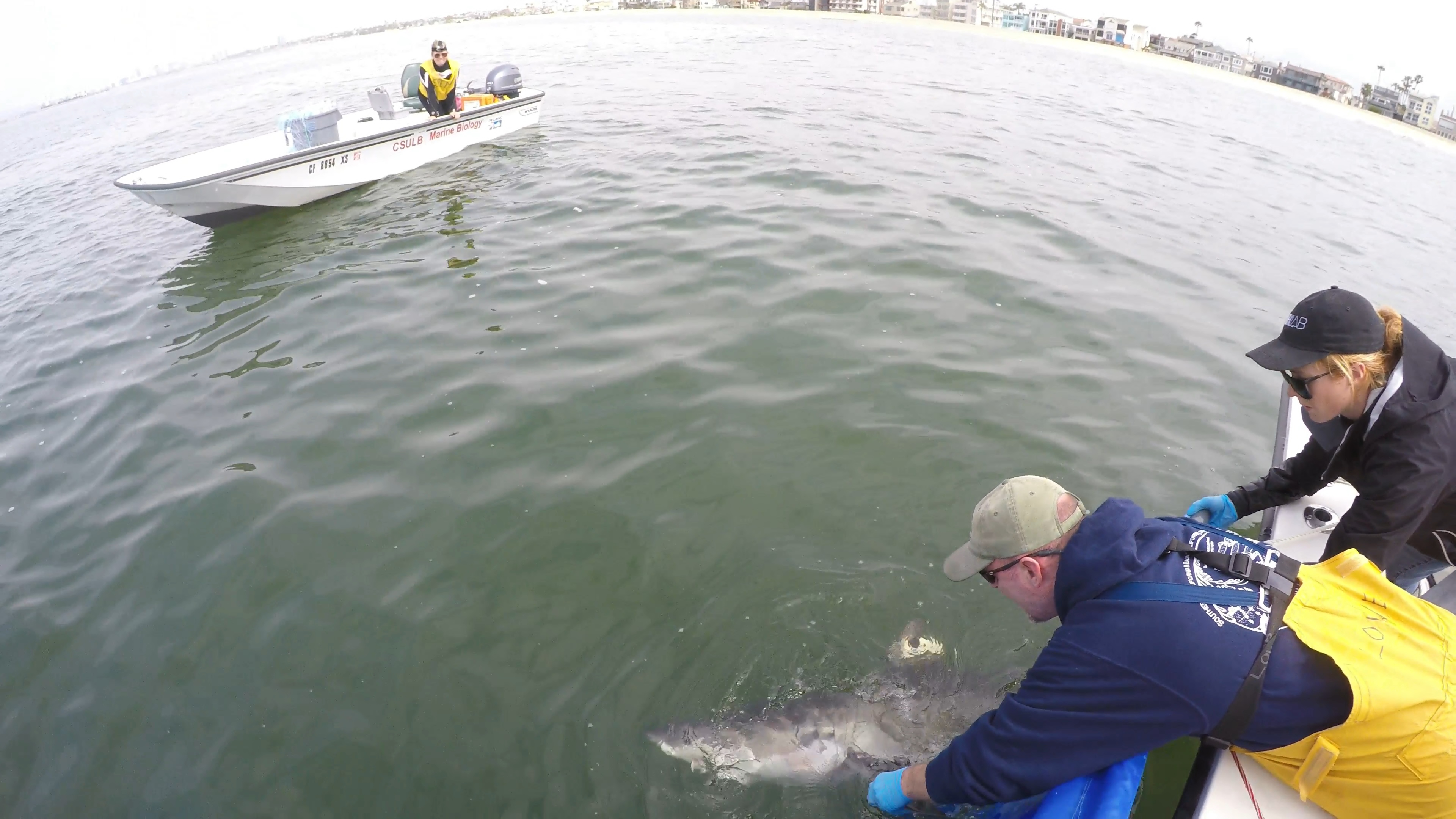
The following appears in the July issue of California Sportsman. Sharks and the City: LA airs Tuesday night at 9 p.m. on the Discovery Channel:
By Chris Cocoles
Photos by Long Beach State Shark Lab
For scientists like Dr. Chris Lowe, the increased sightings of great white sharks in the Pacific are a boon to continuing to understand these fascinating fish.
Granted, more sharks patrolling the beaches dotting Southern California have surfers and swimmers taking notice, but their presence can not only help us comprehend why sharks might occasionally attack humans but also how they affect the oceans’ food chain.
“At the time when scientists were really starting to break ground, believe it or not, there really weren’t a lot of sharks to study. And that made it really hard to do,” Lowe says, citing so many parts of the world where resident shark numbers declined rapidly due mostly to overfishing.
But imagine how scientists are rejoicing during a time when – especially off the Southern California coast – shark populations are back at levels unheard of in recent decades, thanks primarily to conservation awareness.
Let’s face it: We’re intrigued by sharks, whether we appreciate their longevity, marvel at their abilities as a predator or are scared to death of coming face to face with them while treating the Pacific as our personal water playground. Discovery Channel’s latest Shark Week lineup is upon us this month, and the California coast will play a part in the programming again.
Lowe spearheads the shark lab at Cal State Long Beach (he proudly says Jaws director Steven Spielberg, a Long Beach alum, visited the school’s shark lab in the 1970s to collect research for his iconic film) and studies sharks while sharing his knowledge with the next generation of biologists.
“We have great opportunities to make major strides in understanding shark behavior,” says Lowe, who will share some of his research when Discovery airs Sharks and the City: LA, on July 25 (9 p.m.). Lowe and others will explore the waters off the Southland and Mexican coast, near famed shark gathering place Guadalupe Island, and explain an abundance of great whites making themselves comfortable.
We had a fascinating chat with fishing fanatic and shark savant Lowe about these remarkable, feared and often misunderstood bad asses of the sea.
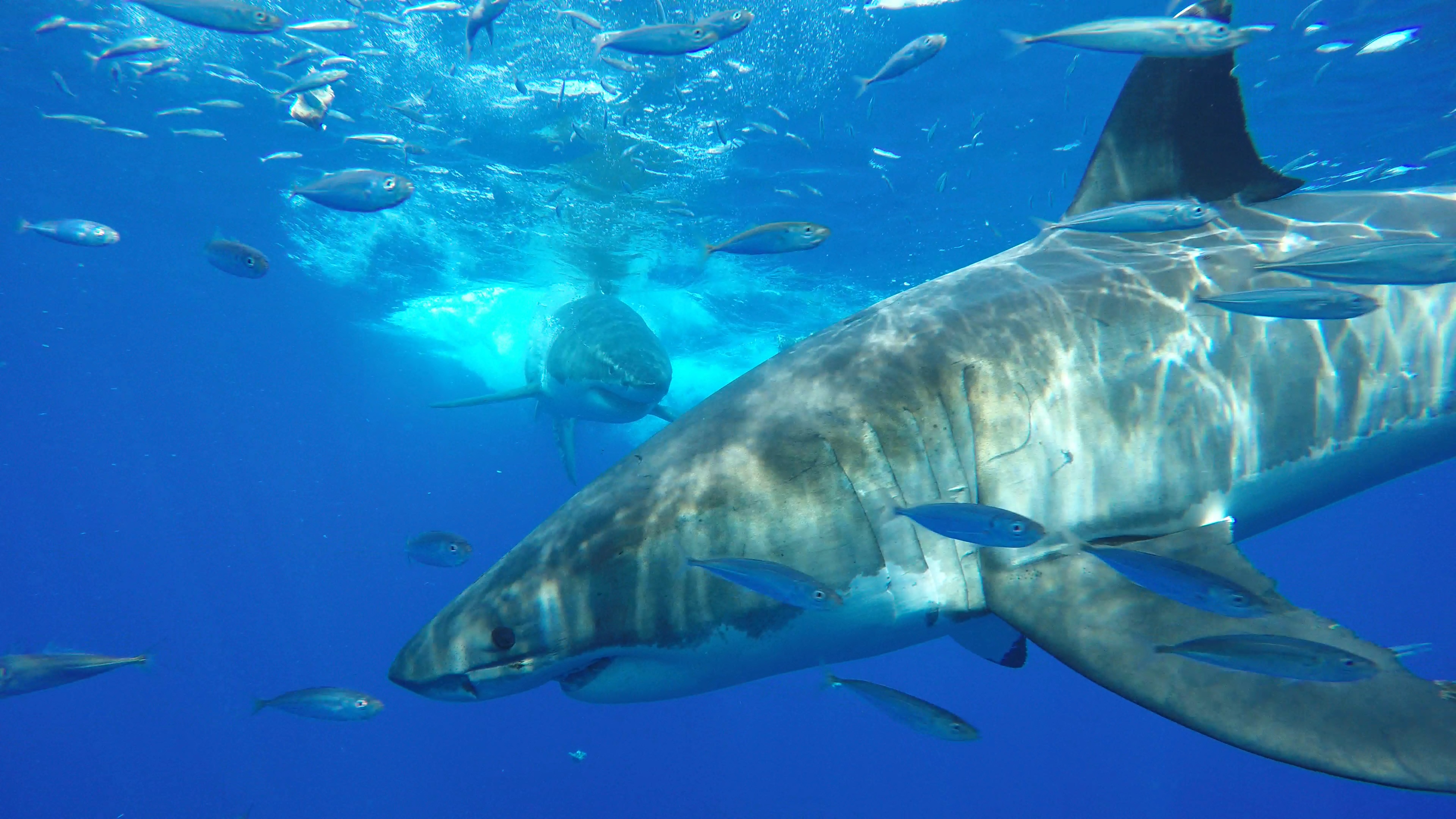
Chris Cocoles Do you think Shark Week has positively impacted how we understand and perceive sharks?
Dr. Chris Lowe Well, sure – I think it’s kind of been influential, along the lines of the book and the movie, Jaws, right? It’s kept sharks in the mainstream. And, of course, people are interested, which is great. What I’m for is getting good scientific information and education out to the public, because I think (now) they fear them less and want to protect them more.
CC But are sharks still so misunderstood by a lot of people?
DCL Absolutely. I think that’s still a battle that we fight and wage all the time. And part of it is because of the way sharks are often portrayed in popular media. I always like to say that you can’t blame Discovery and (Jaws author) Peter Benchley for all of it. Frankly, I think a lot of people like to be afraid of things. They like that little buzz you get from being afraid of something. So in a way, we’ve kind of created the beast in our heads. In reality, they’re not, quite often, the way we make them out to be. And I think the more that people actually interact with sharks – they go to aquariums, they’ll get in the water and they’ll see a shark on vacation or something like that – the more they understand that a lot of that (negative perception) is just hype.
CC To me, a shark is such a fascinating creature when you consider how far back sharks are in the ecosystem. And I’m so envious of you and your Long Beach State students who get to study these fish. That’s got to be an awesome subject to dive into.
DCL I think that will be always be my greatest achievement as a scientist; it won’t be what I achieve but what my students achieve. So that’s why I do what I do. Just going out and doing the work is great, but being able to share what I’ve learned with my students – it’s really what keeps me going.
CC Tell us a little about your research lab at Long Beach State?
DCL The shark lab’s been around since 1969 and was founded by Dr. Don Nelson. And he was kind of a pioneer in studying shark behavior. He was a diver back when scuba diving just came out. He always wanted to figure out why sharks do what they do. And a lot of his early research focused on how they behave. One of the things he became frustrated about was, when you go diving, you’re lucky if you can spend an hour in the water.
When you’re a scuba diver you’ve got bubbles and you’re really noisy and clanky; it’s really hard to observe sharks because, frankly, divers disturb sharks’ natural behavior. So he began to realize that we needed new tools if we really wanted to understand shark behavior.
He was one of the first scientists to start to build his own acoustic transmitters, and at the time that was state of the art. That technology had been declassified by the military, and biologists with any sort of electronics inkling were trying to make their own transmitter that they could put on sharks to use. And they could have a receiver and hydrophone so that they could follow those animals around and see where they go. Back in those days you had to make that equipment yourself. So Don decided that something that was needed to move to the next step and ask, “Why do sharks go where they go, and how do they do it?” He started building his own transmitters, and when I was a grad student in the shark lab back in the late 1980s, I learned how to build transmitters through Don … which I no longer have to make myself, by the way.
At the time, that was kind of revolutionary, but the transmitters were kind of large and the only things big enough to put them on were sharks. The cool thing was, we could put a transmitter on a blue shark for 24 hours and it was exhausting to do the work. At the end of the day, all we figured out was that the shark went from point A to point B, which was very cool. But we didn’t know why they were doing that. What we focused on was developing new technology so that we could answer why they were doing that. Now we’re using satellite transmitters; we’re building autonomous underwater tracking robots.
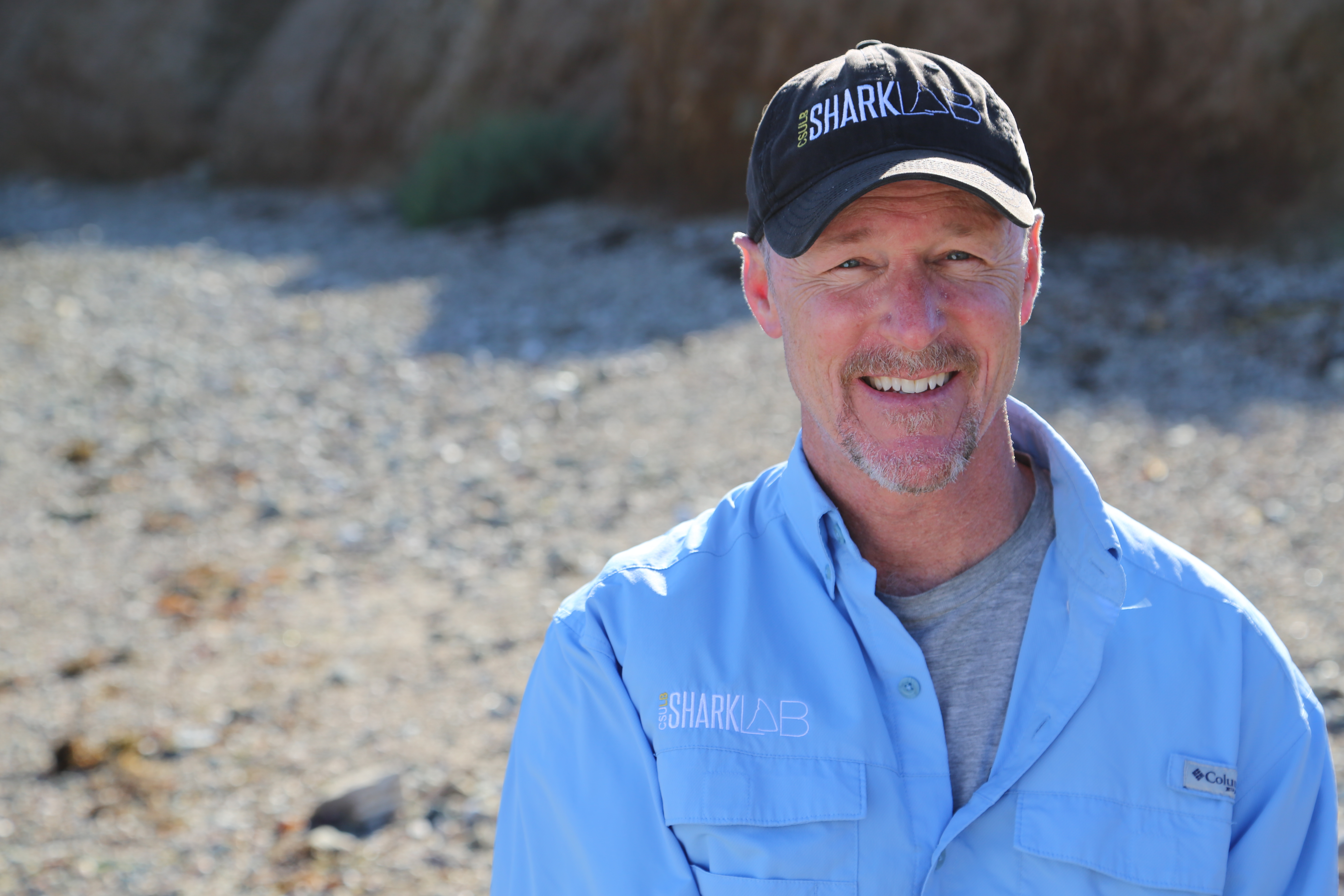
CC So would you say sharks are complicated to understand?
DCL Yes and no. They’re difficult because they’re predators. The key to being a good predator is you’ve got to be sneaky and stealthy; you’ve got to move. If you’re a really successful predator and feeding on smart, evolutionary-driven prey like mammals, you have to change up your game because those animals learn very quickly. So what makes it so tough to study sharks is that they have all those features of a predator, like a hunter. The first time somebody goes out hunting, if you don’t know something about what you’re hunting, your chances of being successful are really low. But the more you learn about your prey, the more you can begin to strategize – how to sneak up on the prey and successfully take one down. It’s that predator in us that helps us better understand that behavior in sharks. It gives us framework to begin to understand how they go about taking down something like a seal, which, by the way, is one of the fastest and most maneuverable species in the ocean.
But I wouldn’t so much say that they’re complicated; I would say they’re really well evolved for what they do. In that sense, we have to up our game as scientists, because studying them becomes that much more difficult. And it’s why technology has opened up doors for us.
CC So often, sharks are considered “villains” when there’s an attack, especially a fatal one. When something like this happens, how does it make you feel from a biologist’s perspective?
DCL Every time those things occur, it’s horrible; nobody wants to see anyone go through something like that. But the reality of that is, we lose perspective. When I give talks – and this could even be grade-school kids – I’ll ask, “OK, how many people here are afraid of sharks?” A bunch of hands will go up and I’ll ask “Why?” to get a little bit of information as to what their understanding of sharks is. But then I’ll ask if anybody has been a car accident, and a bunch of hands will go up, and if they know anyone who’s been killed in a car accident, and a few hands will go up, and you’ll think, “wow.” And when I ask if they know anyone who’s been bitten by a shark, and they’ll look around the room because no hands are up. I’ll ask, “Are you afraid to ride in a car? Because cars are dangerous; why would you ever want to ride in a car?” When they says cars aren’t dangerous, I’ll say, “Why wouldn’t you ever go in the water? In this room, nobody knows anyone who’s been killed, let alone bitten, by a shark.”
So it’s a matter of people getting that perspective. That’s hard, because the difference is we drive vehicles every day and people are literally killed in vehicles every day, but it no longer seems like a risk, and our ability to evaluate that risk is really proportionate to our overall use. When I ask hardcore surfers and people in the water all the time, I ask if they’re afraid of sharks, it’s, “Well, I have to admit it does cross my mind every now and then.” “Does that keep you out of the water?” “Absolutely not … My chances of dying driving to the beach so far outweigh my chances of dying while surfing.” So they understand that perspective, but one of the things that I find is people who use the ocean less have a harder time putting that in perspective.
CC You’re from Martha’s Vineyard off Massachusetts and became an avid fisherman. How has the fishing industry had an impact on the ecosystems?
DCL Growing up recreational fishing and now my entire life, and having a grandfather and other family who were commercial fishers, I totally understand the challenges of balancing those things. I’m a fisheries biologist by training; that’s what I teach, and when you look back at how we managed resources, we didn’t do a very good job of it. But I think we’ve turned a corner. We have a better understanding of how things work ecologically in the ocean. We’re regulating fisheries in the ways we need to in order to keep populations sustainable and making the resources accessible for the next generation. That has required some hard decisions and choices over the years.
But I think there are signs that many of those have worked, because we’re seeing recovery in many of our fisheries in the United States. But this gets more complicated because those resources are shared. You have commercial interests with people going out and fishing for those so other people can eat those resources. But there are also those who want to go out there and catch fish themselves, and those resources have to be managed to accommodate both groups. I think it can be done and we’ve gotten much better at it, but that took a lot of learning and a big investment on our part. We’re starting to see the dividends of that. I’m afraid that one of the ways we went about in solving the problem was we outsourced part of our problem. We now import about 85 percent of our seafood in the U.S. We put a lot of (American) fishermen out of business and increased regulations to try and make our existing fisheries sustainable.
But what we’ve done is increased pressure on stocks outside the U.S. and we’ve made it cheaper to import those, which puts commercial fishers at greater risk. Instead of getting a nice, fresh ecological cod product that was caught by U.S. fishermen, we’re now importing it cheaper from other countries, where they do it in ways we wouldn’t allow our fishermen to because it’s not sustainable.
And that even gets back to recreational anglers. As somebody who loves to fish myself, a lot of times when I work with (sport) fishers, they’ll say it’s commercial fishers’ fault; commercial guys say it’s recreational anglers’ fault. And the reality of it, it’s all of us. But even recreational anglers can have impacts too. There is a lot we can do to sustain our fisheries and make that resource available to our kids and grandkids. When I talk about those resources, sharks can be a big part of those. Quite often, conservation groups want to protect sharks but to the point where they say no sharks can be harvested, which is where I disagree with them. Shark fisheries can be sustainable but have to be managed differently than others. I think we need to do it smart, use good science, and we need to do is sustainably. And if we do that, there’s no reason why people can’t catch sharksand eat them.
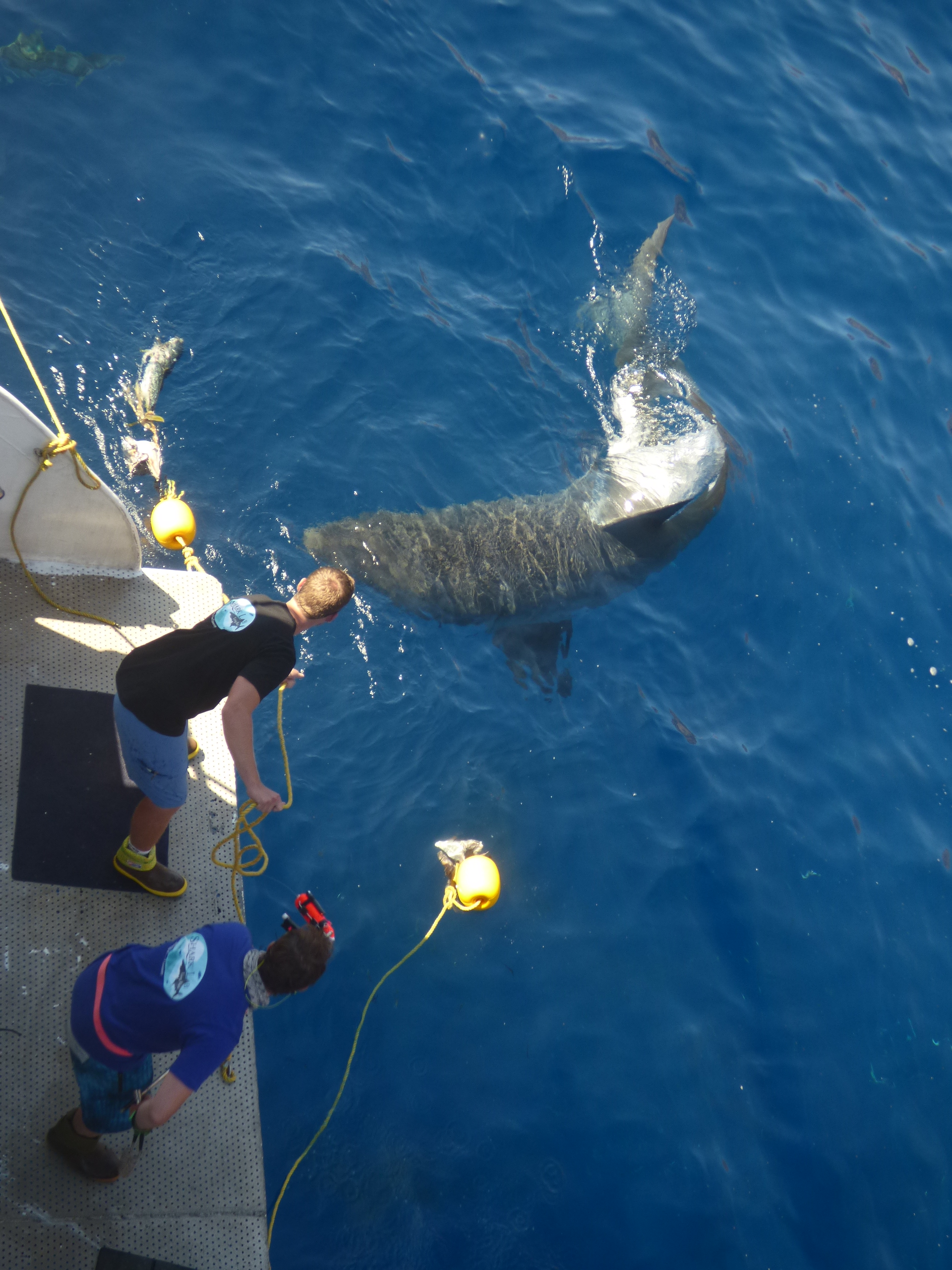
CC So what can we expect on your Discovery Channel show?
DCL It’s based on a hypothesis that we have – that the great white population has increased, and I have colleagues who have been studying adult white sharks in the Farallones (just off the Golden Gate in San Francisco) and Guadalupe Island for 20 years. Everything we know about great white sharks comes from those two locations. But if the population is going up like we believe – and we know those places are starting to get a little crowded – researchers are seeing fewer and fewer new individuals coming in there. And there are several possible explanations for that – one is that the population is not growing anymore, which I would disagree with. In Southern California, we see more babies every year. The other is that those places are saturated and there’s no more space for adult or subadult white sharks in those locations. And that means those kinds of “teenagers” coming into that population that can’t compete with the old-school sharks that have been in that location for decades now, have to find a new place to eat.
In Southern California, if you look at locations like the Channel Islands, the numbers of seals and sea lions are maybe some of the greatest densities anywhere on the West Coast. So if I were a white shark and I couldn’t compete (where great whites are known to be) and I wanted to eat marine mammals, where would I go? I would go to the Channel Islands … So our goal for this project was to go out there and tag some sharks.
CC Right off the coast in your backyard, sharks, even great whites, have become common. Is that pretty cool to have that kind of access?
DCL I’ve been working in Southern California for 30 years, and I never thought I’d see the day when I’d be able to go the beach in my front yard, basically, and catch and tag baby white sharks. I could never imagine that I would ever see this day. So for me it’s really exciting to see sharks come back, white sharks in particular. The recovery of the great white population is probably our greatest conservation success story. Predators are at the top of the food chain, they’re never super abundant and they’re dependent on everything else in the food web. So if your food web is messed up, those predators just can’t come back, so the fact they have is really a sign that we’re doing some things right. In Southern California, when we those success stories, that’s impressive. We have 22 million people who live within 60 miles of the coast, and this is one of the most populated coastlines in the world and heavily urbanized. When you see those animals coming back here, that’s a sign.
Are we completely out of the woods? Absolutely not; we still have problems with trash and pollution, loss of wetlands and global climate change. But we can solve those problems both regionally and globally. We’ve got to be smart.
CC What’s the feeling like to tag a great white just off the beaches of
the Southland?
DCL You should see the smile on my face [laughs]. I love it, and I love doing it with my students. For them, it’s the most exciting thing because they do it for free.
CC Are you still learning something new about sharks all the time?
DCL As fast as we’re developing new technology and better tools to answer questions that have been on the back burner for decades, as soon as we answer one, five new ones pop up. Every single day that we go out and do something, I’ll go, “I never expected that,” or, “What does this mean?” It’s nonstop. CS
Editor’s note: For more on Long Beach State’s shark lab, go to csulb.edu/explore/shark-lab. Follow on Twitter (@CSULBsharklab). Check out Discovery’s Shark Week lineup at discovery.com/tv-shows/shark–
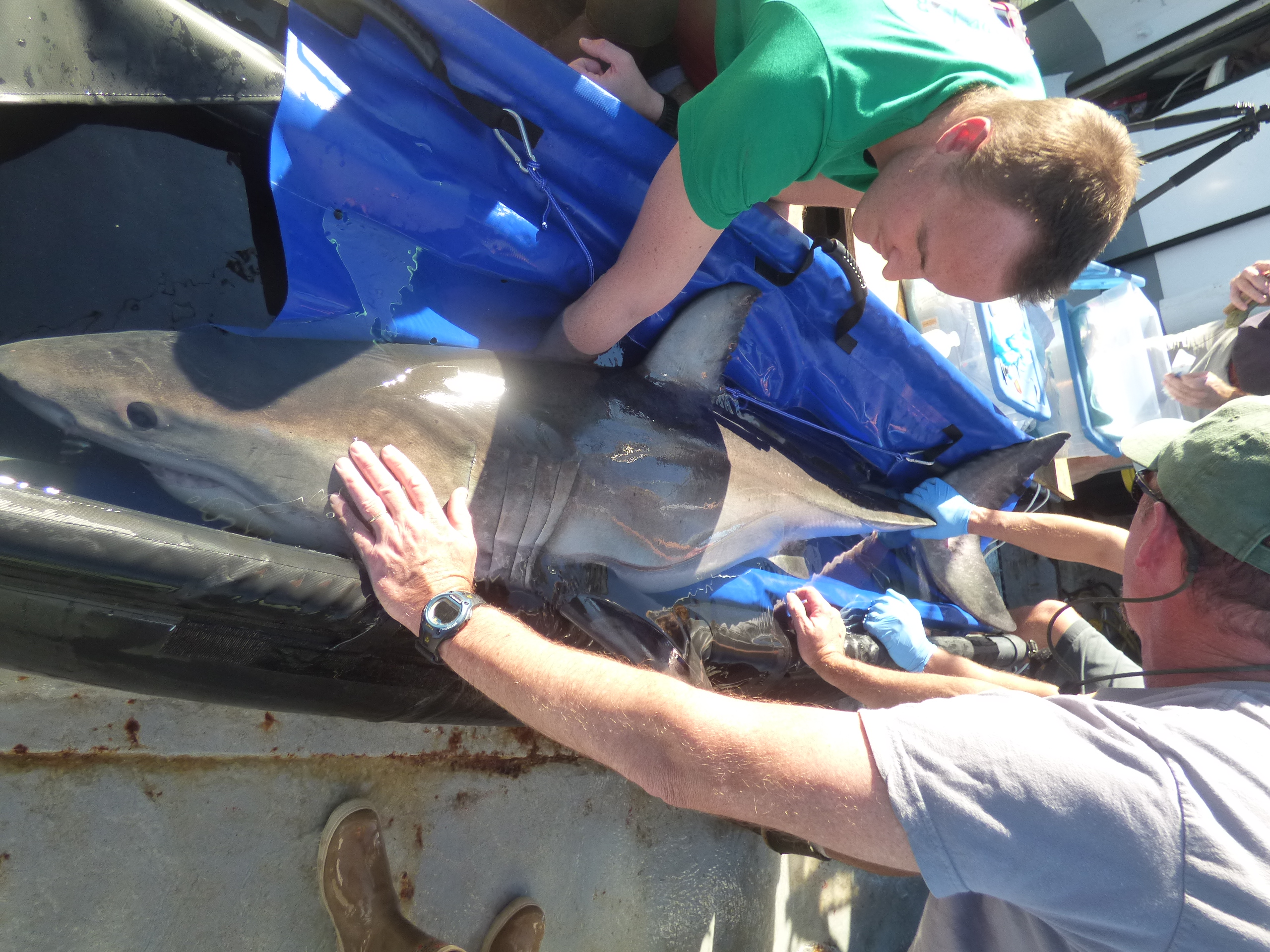
Sidebar USING TECHNOLOGY TO BETTER UNDERSTAND SHARKS
State-of-the-art robotics sent into the ocean depths allows scientists to get even closer to sharks and analyze their behavior. But with new gadgets come new challenges.
“I work with a roboticist, Chris Clark, at (Claremont’s) Harvey Mudd College, and it’s kind of tricky because an autonomous operation requires a lot of information,” Lowe says. “When we were designing the tracking robots, Chris kept asking me, ‘Well, what do sharks do and how do they behave?’”
Lowe started looking at old shark tracks in search of trends to help establish a starting point for programming the robot with what the shark is going to do – or at least educated guesses about what it might.
“What we want the robot to do is, while it’s tracking the shark, it never gets within, say, 100 yards of the tagged shark,” Lowe says. “And we know the shark can hear the robot because it has a propeller and it makes a low-frequency sound. So if the sharkactually is curious about the robot and starts swimming towards it, the robot’s programmed to move away.”
The thought process is that even if the shark continues to snoop around the device that’s backing away, eventually boredom will sink in and the fish will return to whatever its brainwaves were convincing it to do before the robot entered the water, allowing the fish to be followed again by the robotics.
“A lot of that programming is from basic information that we’ve already learned from the patterns that we see in sharkmovements,” Lowe says. “So now, to get at how do sharks make decisions, we can instrument those robots with all sorts of oceanographic sensors, so while the robot is tracking the shark, it’s moving up and down the water column while measuring (data). And it has a video camera for us to see schools of fish, other sharks and other species that are around the shark that we’re tracking.”
And as more data piles up from these tendencies, the notion of getting into a shark’s complex head isn’t such an outrageous concept anymore. CC



